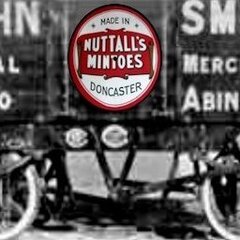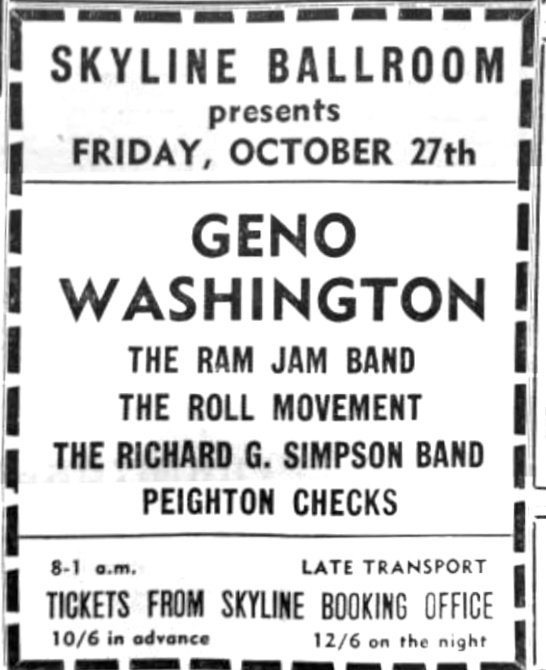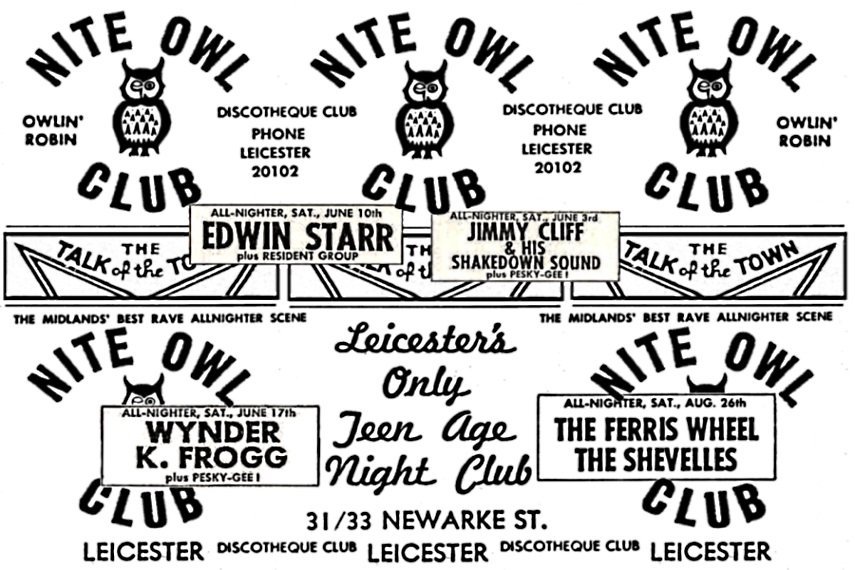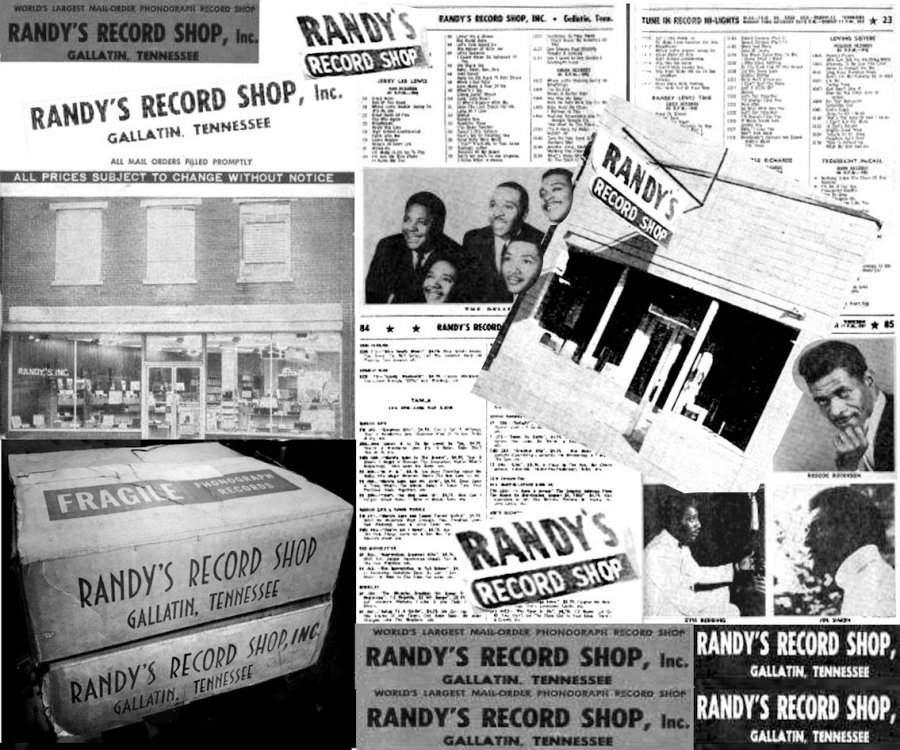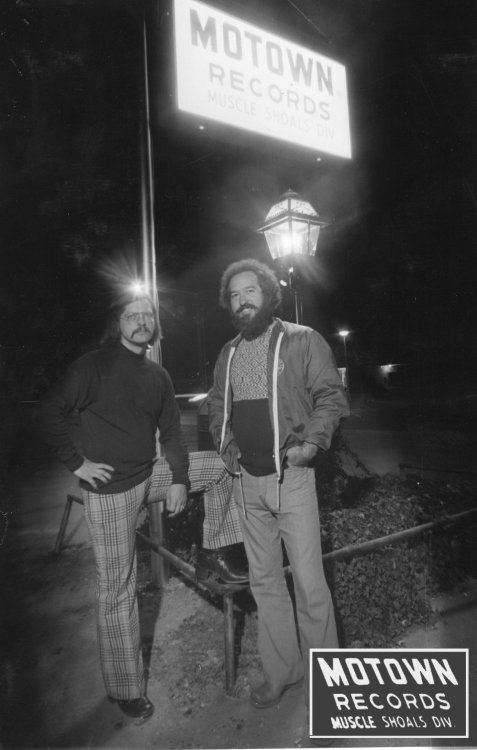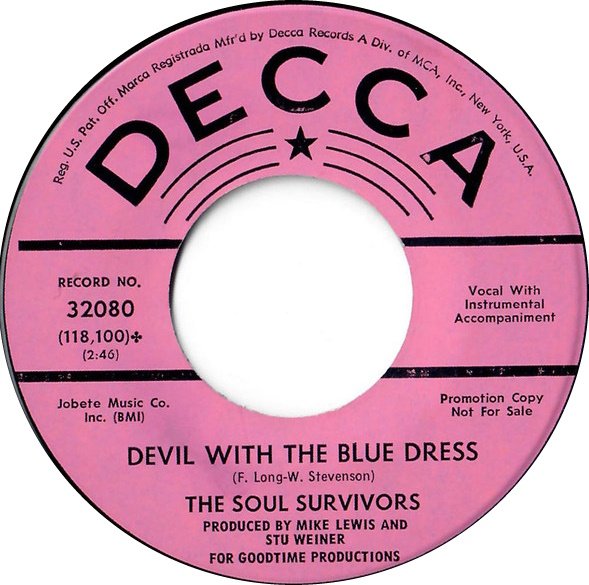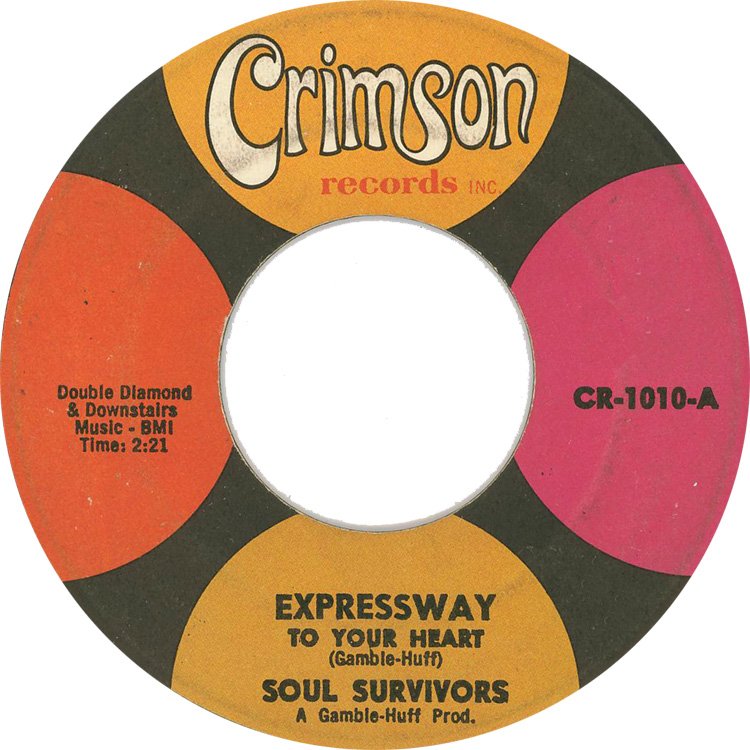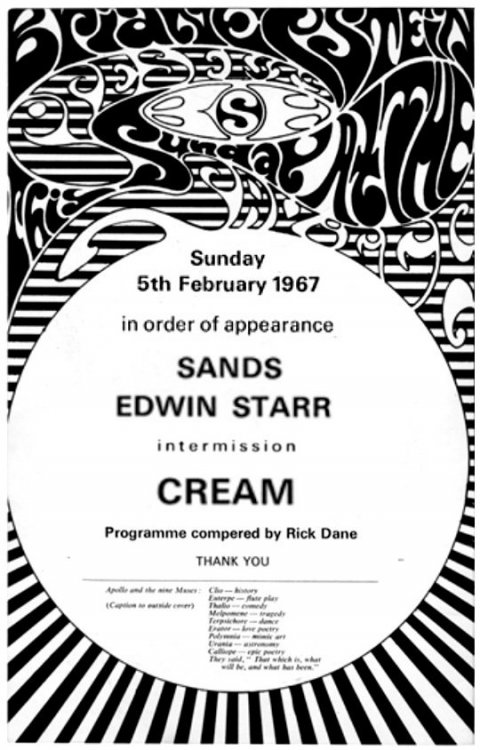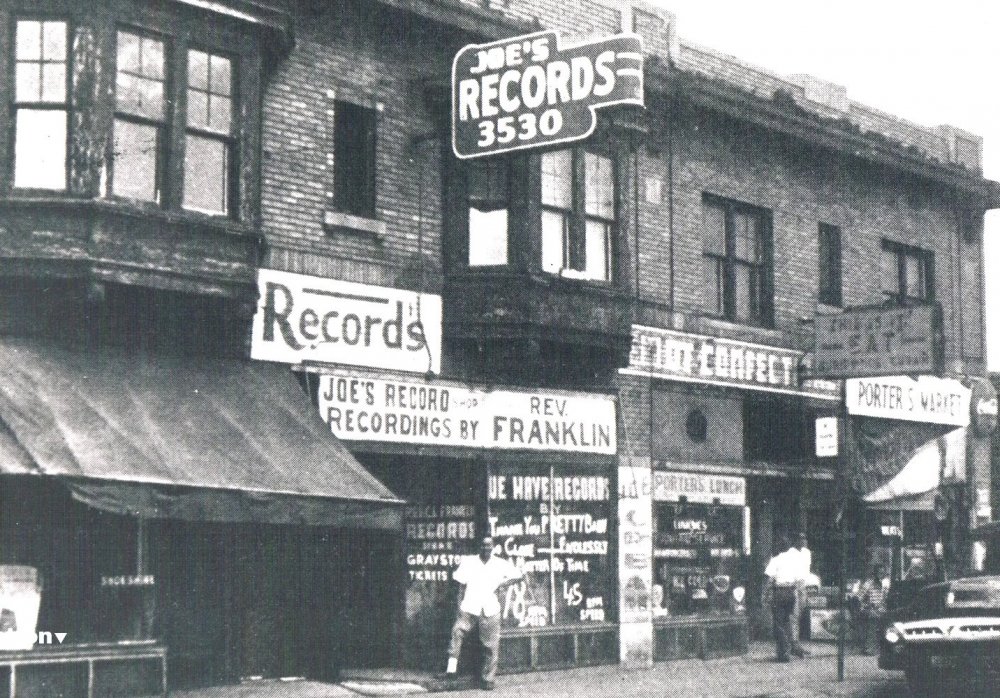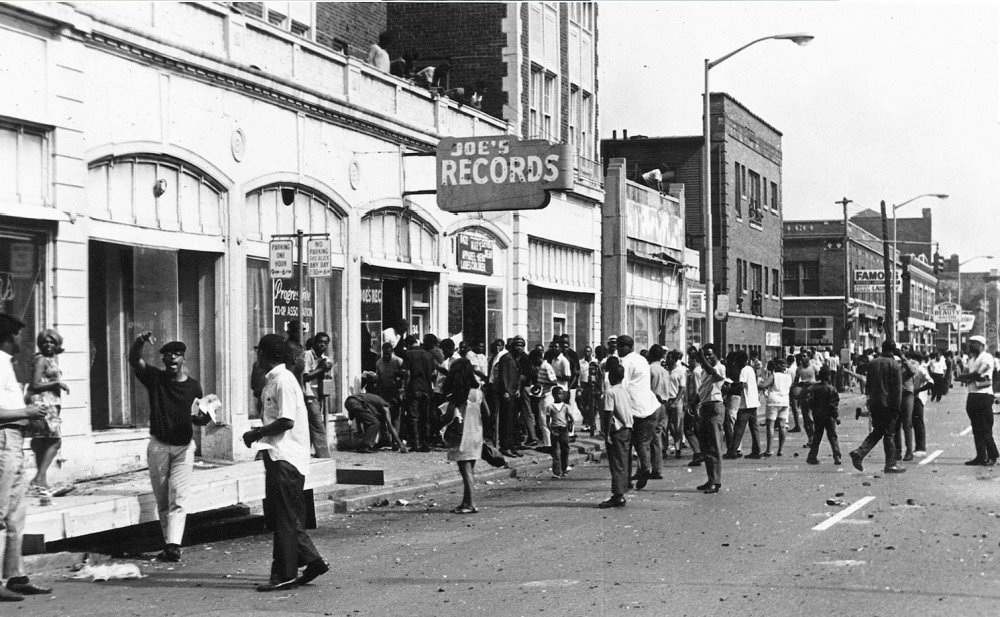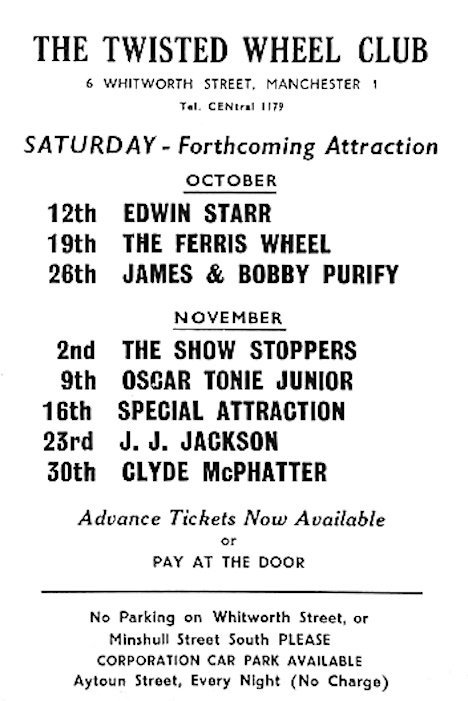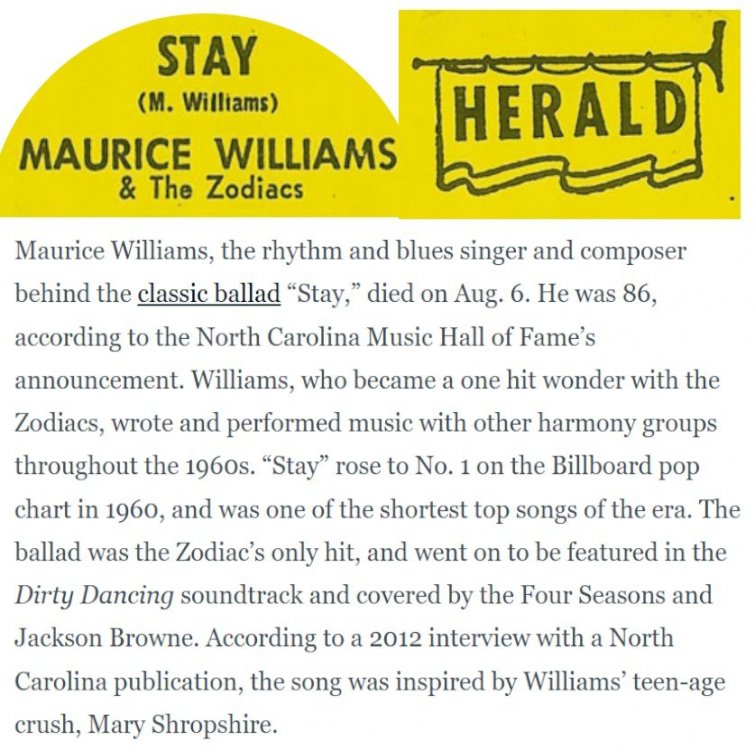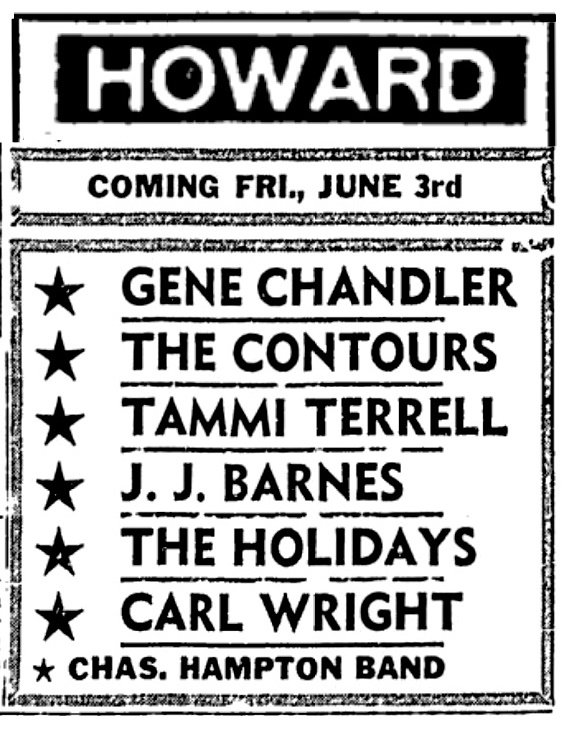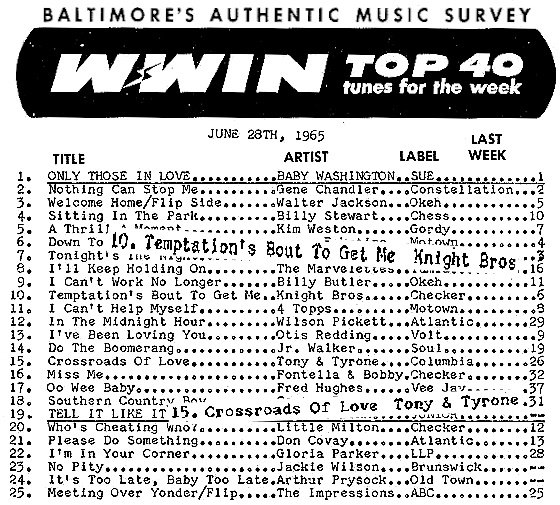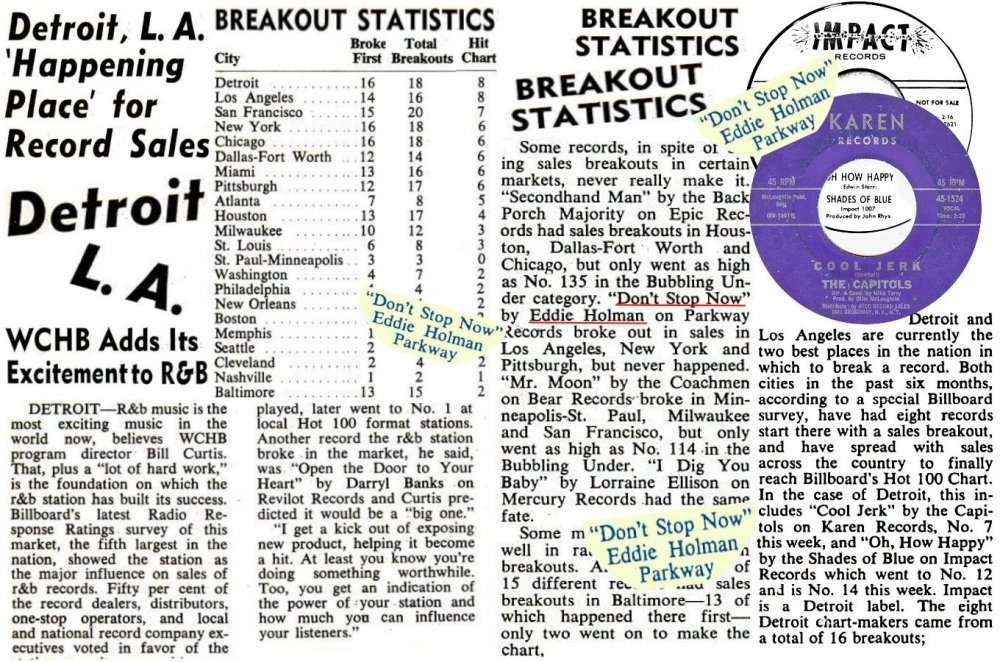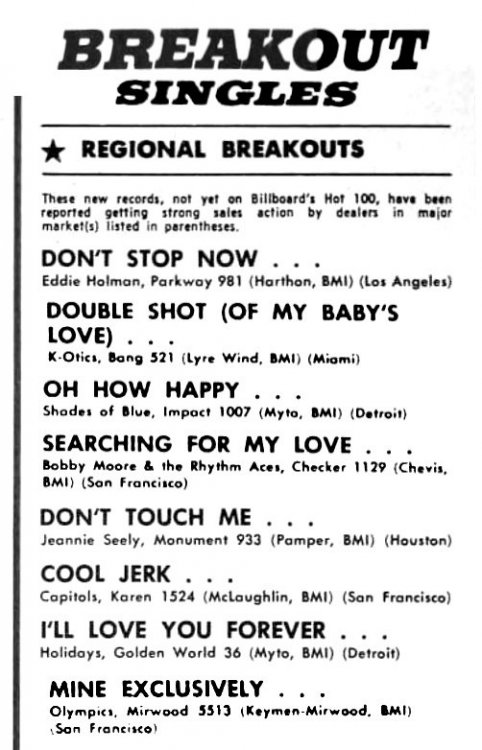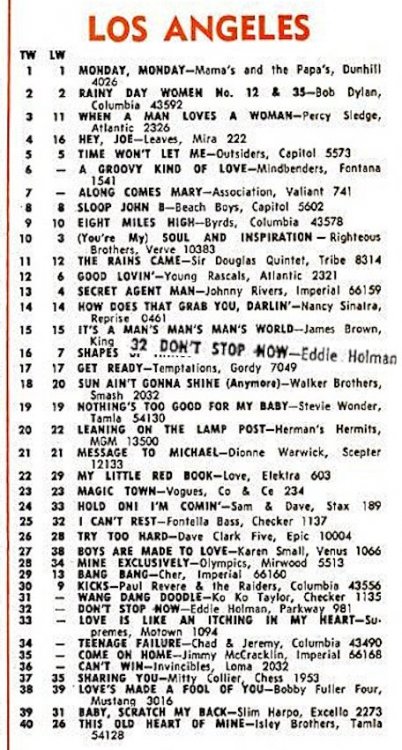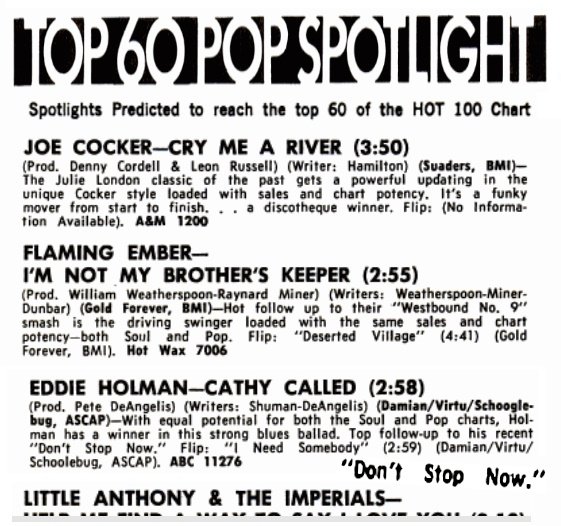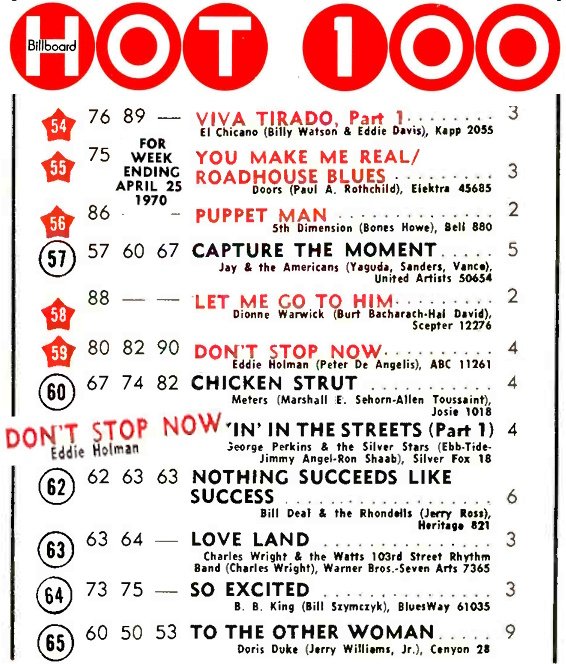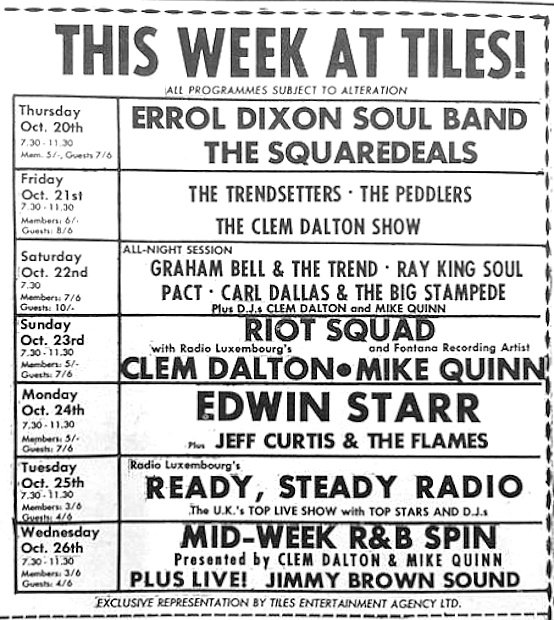Everything posted by Roburt
-
Wrong Words
Peter Kay did a great sketch about misheard lyrics in his shows a few years back (the clips up on youtube). I always thought the lyrics to the disco hit song "Last night a DJ shagged my wife" were a bit off. . . . As a 15 year old, I always used to sing "Sugar for my honey's lunch" but I don't think that's what the 4 Tops were actually saying.
-
1960's (N)Soul Club Outlying Areas
The folk I'd really like any more info / updates on are these few (from above) ... Alan & Mac; Norwich Roger, Cardiff Pete & Chris; Ashford Ipswich; strangely he was from Ipswich Sinbad; Wolverhampton Brian, Walsall Mick & John; Kidderminster Can't have been too many niter goers from those areas back in 1967. CHEERS
-
Volvo Car TV advert
On at the moment. It ain't "Make Me Yours" but it's still great music on the TV on a regular basis ...
-
1960's (N)Soul Club Outlying Areas
Born & grew up in Yorkshire. First allniter was in 1966, though I'd been hanging with the Donny & Hull soul crowds ahead of that time (but just doing mainly local clubs as I was still in school -- I did however have a Lambretta, so got to soul clubs in Hull , Goole, Tadcaster, Cleggy, etc.). First niters attended were in Sheffield, then Leicester & by September 67, I was going to the Wheel in Manc. Also did the Tin Chicken (Castleford), a 2nd Manc niter (when we had car trouble xing the Pennines & so arrived outside the Wheel too late to gain entry). In summer, we'd get further afield (on the bikes & in friend's cars); Brid, Yarmouth, Norwich, etc. ALSO Donny was a Saturday evening meeting point for the Hull, Goole, Scunthorpe, Grimsby, Lincoln soul crowds on their way to a niter. So I got to know guys from all over -- those who came to Donny en-route to a niter and those I met at niters. So I had loads of soul obsessed acquaintances back then. By the start of 1967 I had my 1st full time job, so had more cash to splash (so went more often & further afield (record hunting / clothes buying / gig attending trips to London, Leighton Buzzard, Coventry, Leeds, etc). ALSO, having my first job brought other perks. I worked for the Council in Highway Design offices (M1, etc.) and we'd be gifted little things at Amas. Being a newby I didn't get much, but I did get a 1967 pocket diary (1st one I'd ever had). I'd list what I got up to back then and it's the only way (these days) I can account for my movements / actions back then. For some reason, I didn't get given a 1968 diary, so my escapades in 68 / 69 / 70 are now almost a complete blank (apart from a few memorable live acts I got to see). ANYWAY, finally I get to my point ... I listed at the time guts who Id met on my travels and who I'd got to know. But many times, this would just be a Christian name ? nickname & own of origin. HENCE ... Toots, John & Gunner from Peterboro. I went to see folk I'd met at niters in the likes of Hull, Goole, Lincoln, Nottingham, Sheffield, etc. thus I'd visit clubs in Hull (Gondola, Discotheque, Skyline), Wakefield (Locarno), Tadcaster (Boulevard), Brid (Jungle), Goole (Paradise), Cleggy (?). Some names I listed back then I hardly recall any details of the actual people now ... of course only meeting up a couple of times a month or only in certain clubs didn't make for strong friendships but at the time they were important people in my social life. Anyone help fill in the gaps with regard to any of this lot & what became of them ... Mick Graham, Steve P, Pip, Penny, Pete, Pete & Ben;; Scunny ALSO Steve King (probably from Scunny as I wrote he was with Fred (Benson) @ the Mojo. Kenny Sharpe, Click, Eric, Dave & George, the 2 Sues; Nottingham Jean; Goole Pete Hardy; Hull (he emigrated to Canada in 67, seem to recall getting a note from him in 69/70 in with some 45's sent from Koppel's). Veronica & Dee; York Phil Pearson, Stew, Ben & Rimmo; Sheffield Shiela, Ces & Banger; Leicester Alan & Mac; Norwich Roger, Cardiff Pete; London (a Nite Owl attendee) Pete & Chris; Ashford Ipswich; strangely he was from Ipswich Sinbad; Wolverhampton Brian, Walsall Mick & John; Kidderminster Mick Murphy; Northampton (probably met him @ the Nite Owl). Also got matey with a lad from Banbury @ the Nite Owl (Leicester) but his name now escapes me (but there can't have been too many Banbury guys who attended the Owl in summer 67).
-
Just playing...................
Lots of the Beverly Glenn output was top quality material. It's a pity Otis Smith wasn't that fair with the acts he signed.
-
Golden World: Locals & Outsiders Involved
Robb, good to hear you're keeping well. I know what you mean about having had to 'slow down' as I'm just a few years behind you (75 now). It's obvious that a full book (s) is asking too much of you now BUT you do have amazing knowlwdge in many fields of interest to us here. Brits only really stated to head over to the States to 'crate dig' from around 1970. My brother was in the merchant navy from the mid 60's to the end of that decade & sailed on a rotational basis from the UK to Argentina & the Great Lakes. As such, he would dock in places like Chicago, Detroit, Cleveland, etc on a regular basis. I'd ask him to go to local record stores & pick me up any soul records he saw in the 'discount boxes'. Trouble was, he wasn't a soul fan (into folk music), so he had no idea what he was looking for. LP's were easier for him (due to the cover pics), so he did bring me back albums by Spyder Turner, Freddie Scott & the like (but just a handful). To get my fix, I had to do mail order to Randys & Ray Averys postal service. ANYWAY, back to my request. We know little or nothing about 'crate digging' in & around Chicago & Detroit in the 60's ... you know a great deal indeed. It would be great to have you start a thread about your record hunting escapades in US cities back then.
-
Golden World: Locals & Outsiders Involved
It seems not everything was plain sailing on the good ship Golden World ... I asked Sidney Barnes ... what's the story behind this song / recording ... CAN'T SHAKE IT LOOSE by PAT LEWIS ... am I right in thinking the writers were George (Clinton), J J Barnes (not Sidney ?), J J Jackson & Rose M McCoy .. with you, George & Mike Terry producing .... . . . quite a combination ... Sidney Barnes "Ok here I go setting the record straight on this one. Ed Wingate came into the room early one morning and said to me and George who were looking for something to do, said. I want you guys to write and produce a song on Pat, Pat Lewis who had been doing a ton of background work with us for a while. And he said I want the title to be "I'm Into Something I cant Shake Loose". This was something he would do often. So I sat down at the piano with George and we wrote the song. Then Mike came and wrote the arrangements. That next day we recorded it with Pat at that was that. Now me & George thinking everything was cool cause we had been doing things like this so often, and we were constantly busy. So it wasn't until the Supremes recorded and released it on their "Love Child" album did we noticed that some extra names had been added as writers on our BMI Statements. So here's what happened (since you asked). Joann Jackson was Ed Wingate's girl friend and President of Ed's publishing co. Myto Music. She had brought her friend Rose Marie Mcoy in from New York to write for the company. I met Rose Marie when I was in New York working with J.J. Jackson a few years before, and she was a good writer. But I'll never really know if they were trying to SCREW me around or made some sort of mistake while filling it. I finally straightened it out years later with BMI and collected my back royalties. But by then the damage had been done. It really upset me there for a while, because I was always honest and trusted everybody i worked with in the business. But, J.J. Barnes (bless his soul) had absolutely nothing to do with it, at all. Neither did Joann Jackson, or Rose Marie McCoy. George and I wrote it, and Ed Wingate named it".
-
Golden World: Locals & Outsiders Involved
Gwen teamed up with Terry Woodford / Wishbone Productions in Muscle Shoals (after Terry & his partner Clayton Ivey quit Fame to go on their own). That's how Gwen's "You Better Watch Out" was recorded. Then Motown signed up Woodford & Ivey as MOTOWN SOUTH. The pair had previously leased out there tracks to the likes of WB, Capitol, Polydor, etc. But Motown wanted them & their acts, so they signed. They worked with the likes of the Commodores, Supremes, GC Cameron, Thelma Houston, Tempts, etc + cut their own acts for Motown -- Reuben Howell, Bottom & Co. AND GWEN OWENS. Gwen told me she wasn't happy with the situation and insisted she be 'released from Motown' after none of her tracks were released after 6 months. So her 45 came out on Casablanca. BUT, Motown retained the rights to some tracks she'd cut & some of them escaped (years later) on a BBC Radioplay compilation LP (this has been discussed on SS in the past). Anyway, Woodford / Ivey soon teamed her with 2 other females in the disco group HOT and they went on to enjoy good sales & chart hits. P.S. ... the BBC Radioplay LP from Rudy Love was also a Woodford / Ivey production job. This album was leased to the BBC by Wishbone Prods themselves and not by Motown ( I believe it wasn't cut by Woodford / Ivey as part of their Motown deal).
-
Soul Survivors 1967
Are these two singles by the same group; released only a few months apart ... . . . Discogs has them down as separate entries, so not the same group ...
-
I Hate hate Razzy
Now, as I said, my memory is shot these days, but that label doesn't ring any bells. Guess it had to be this version though. THANKS. I have the labels The Country Soul Revue – Testifying CD as well, so the label should ring a bell.
-
I Hate hate Razzy
It has recently been put out here again by Charly ... BUT about 20+ years ago I recall going into the Manchester branch of the big UK indie discount record / CD shop of those times (it went bust) and seeing a newly released UK version of this 45 in their cheap box (it was on a soul reissue label). I left it coz I already had an earlier copy of the 45, but I've never seen another copy (& this version doesn't seem to be up on Discogs). Always regretted not buying it. Can anyone tell me what label it was on (my brain is failing due to old age) ?
-
Golden World: Locals & Outsiders Involved
Robb made mention of all the talented people who were working at / for Golden World ahead of BG buying Ed Wingate out. Just to reinforce that fact, below is a montage of just a few Golden World single releases put out over a short period ... people involved on these included Ed Wingate, Al Kent, George Clinton, Sidney Barnes, Mike Terry, J J Barnes, Don Davies, J Bratton, Gene Redd, R Morris, Joe Hunter, K Peterson, Billy 'the Kid' Jackson (aka Gene Dozier) + Edwin Starr, the Fantastic Four, Laura Lee and many more. While Edwin Starr was ALWAYS a big draw on live UK club dates, by 1967 the music scene in the UK was changing. Lots of soul cover bands were changing; going over to pop, progressive and blues rock material. So lots of clubs / venues that had booked loads of US soul acts were moving on to book new (or just renamed) Brit acts ... a perfect example of this can be seen from the acts that Brian Epstein / the Beatles were booking @ the Saville Theatre in London ... Garnett Mimms with Jimi Hendrix, Pink Floyd, Fairport Convention, the Who (no longer a mod group), Tim Rose, Donovan all mixed in with the likes of Jnr Walker, the 4 Tops and Edwin Starr (with Cream) ...
-
Golden World: Locals & Outsiders Involved
-
Numero Group - 2024 London Pop-Up 25-29 Sept 2024
Sounds good. I'll have to try to get along there (hope there'ill be 45's on offer as were as the albums).
-
Golden World: Locals & Outsiders Involved
Seems Ed Wingate selling GW to BG in September 66 was a good move as 1967 was a very turbulent year in Detroit. Jobs were going as US car makers struggled to sell as many units as they had in the past. On top of that, racial tensions were really on the rise plus all the protests against black guys being shipped over to Viet Nam to die. The tensions culminated in the famous July riots in the city. The Algiers Motel incident on the nights of July 25–26, 1967, happened due to the 12th Street riots occurring nearby. At the motel, 3 black kids were killed and nine other people abused by a combined force of Detroit Police officers, Michigan State Police officers, and Michigan Army National Guardsmen. It was the incidents on those nights & over the following weeks that made BG decide to quit the city & relocate to LA (+ his desire to get into the movie biz). Edwin Starr wasn't from Detroit, so must still have felt a bit like an outsider. Many Detroit based music biz folk upped sticks and moved to Chicago, LA & the like after the riots. I guess part of the reason that Edwin spent so much time in the UK in 67 / 68 was coz he could get lots of work here and things back in Detroit were in turmoil. I know in lots of US cities hit by riots, both those in Detroit and other cities in 67 and the more widespread ones in April 68 (after MLK's killing), the night clubs / theatres had to shut down for a good number of weeks as it was too dangerous to open. Plus many potential audience members were too scared to venture out after dark. Edwin was in the UK in September / Oct 66. He returned here to tour again in Jan / Feb / March 67, then again in May / June 67. He was here even more in 1968; 3 tours in all -- Jan / Feb 68 + May / June 68 + Sept / Oct 68. He was on at the Wheel in Oct 68 (& during his earlier UK tours) ... Many times we view the soul music / record biz in isolation and ignore the 'outside forces' that were changing it for non-musical reasons.
-
RIP Maurice Willliams
-
Golden World: Locals & Outsiders Involved
Robb, once again you've come up with important info. As stated earlier on this thread >> . Edwin undertook a UK tour in October 66. It's said that when he left the US, he was a Ric Tic act but when he returned from his UK tour, he was a Motown act. That tour was organised by Roy Tempest and ran from the 14th to 29th October. However it seems he came across to the UK ahead of the 'official tour' beginning. Maybe Polydor asked him over for promotional purposes, they released 45's by him in April & July 66 (+ December 66), These 45's did well for him here & continued to sell for months after each was issued (2 were released on a 'back to back' Polydor 45 as late as Nov 68). "Stop Her On Sight" was in the UK pop charts in May / June / July 66. "Headline News" in August / September 66. With those facts, it seems to me likely that Polydor had him come over to the UK in September 66, ahead of his full UK tour commencing. I'd guess that GW / Ric Tic's sale to Motown would have been kept under wraps while the negotiations were going on, so no doubt Edwin had no idea of what was happening in early September 66. It's stated on the net that when Edwin came over here for his 'October' tour, it was his 3d visit to the UK. No doubt his earlier ones were instigated by Polydor for promo purposes. I'd guess his 2 UK hit 45's would have had him jumping on a plane at short notice in an effort to boost the chart standings of his records. Did Edwin get to appear on the top UK TV music show (RSG) on either of those earlier visits ? He certainly met Pete Stringfellow on one UK visit ahead of October (Pete being in charge of crowd control on RSG). I do know Edwin was on RSG in late October 66. It's also stated that Edwin played the Twisted Wheel in September 66 and he can't have done that if he was back in Detroit. I wasn't (yet) attending the Wheel, as my 'local' niter / dayer was Sheffield's King Mojo (till early summer 67). One of Edwin's first UK club dates was at the Mojo in mid August 66 (he played the niter session & had no hotel, so Pete S took him back to his mother's house where Edwin slept on the floor). On Edwin's early UK gigs he was 'usually' backed by the Senate. Anyone know that group's history from that period (they backed a lot of Tempest's visiting US soul acts -- Garnett Mimms, etc ). So Edwin being in the UK from September to late October 66 would give credence to him leaving the US as a Ric Tic act but returning home as a Motown act.
-
Golden World: Locals & Outsiders Involved
Jumping back to a previous post ... Ila Vann was working in a NY studio with Gene Redd, the results of this being her Roulette 45 "Can't Help Lovin That Man Of Mine" issued in April 67. Around the same time she was singing with Gene's sister Sharon Redd on her Veep 45 "Half As Much", also an April 67 release. He'd been working for Musicor in NY with the Platters just a couple of months earlier. So it seems Gene was back in NY before the start of 1967. He seems to have started working with the Platters in NY around May 66 as he was responsible for their 45 cut "Alone In The Night (Without You)" which was released in August 66. The group's Nov 66 released 45 look like older recordings & their 'Detroit related work' came next with the 1st released results of this being "With This Ring" early in 67. So it seems Gene Redd was back working in New York for other labels (not GW linked) by late spring / early summer 1966. Jumping back to GW / Ric Tic ... is it known when J J Barnes contract was bought by Motown, as he was free of Motown and had his 1st Groovesville 45 out by early April 67. In June 66 he had been touring on a package with Motowner's Tammi Terrell & the Contours (with the Holidays also being part of that revue) ... Tammi having been signed by Motown early in 1966.
-
The Eddie Holman 45 on our charts is 6 months old
The Baltimore chart was printed in Billboard. It was the Balto radio chart -- based on the stns in the city (pop & soul). Billboard printed such charts for around 16 cities in most editions of the mag. I don't doubt that WWIN were on the 45's case much earlier as they were the top black stn in the city.
-
The Eddie Holman 45 on our charts is 6 months old
Seems Eddie's Parkway 45 "Don't Stop Now" was expected to do well (chart wise) as it was a BREAK-OUT 45 in certain cities. However, that didn't happen; it's popularity didn't spread out right across the US. MIND YOU, at the time it seems that Detroit & LA were the hot cities for breaking new releases ... I'd guess though that was coz 'little indie labels' in the 2 cities were putting out great 45's at the time. So singles by the likes of the Capitols & Shades of Blue had got their 1st radio exposure in their 'home towns'. From there, they'd spread out right across the US, making the R&B and pop charts in the process. Maybe his new 45's lukewarm reception in many markets was the reason he was still out promoting "This Can't Be True" even after it's follow-up was in the shops. Mind you, Pittsburgh was one of the few cities it had done well in, so maybe that was the reason he was still promoting it there in summer 66.
-
The Eddie Holman 45 on our charts is 6 months old
More Eddie Holman related stuff ... the Parkway 45 items all dating from April / May 66. Eddie obviously believed "Don't Stop Now" was a good song as he cut it again for ABC & it got released on 45 again ...
-
Golden World: Locals & Outsiders Involved
I believe that more of the backing tracks were cut in Detroit, the lead vocals in Muscle Shoals ... I guess Don Davis would only have been credited as the producer if he did both the backing & vocal tracks (could be wrong though). Is it known -- in his STAX PERIOD -- how often Don Davis spent time darn souf (Memphis , Muscle Shoals) and for how much of his time he was just back in his home Detroit studio ? I assume some Stax acts, the Dramatics for instance, cut most of their stuff in Detroit, though Ron Capone (a southern based producer) gets credits on some of their stuff. I'd also guess that other Don Davis associated Stax acts worked mainly in Detroit. However, Don Davis did loads of Johnnie Taylor tracks; many of them being Memphis cuts. Outside the US, Stax had 'crossed over' to the white market but back in the States they were seen as being a BLACK RURAL SOUTHERN outfit, so white radio didn't play their stuff. Stax execs were determined to remedy that situation. I guess, with black Detroit tracks being big pop hits & getting extensive white radio plays, they saw that a Detroit / Memphis hybrid might held them to cross over to the American white market. THUS Don Davis would be a very valuable hire with his Motown, Golden World, Groovesville experience. Davis was used to get that 'hybrid sound' on cuts such as Carla Thomas's "Pick Up The Pieces"
-
Golden World: Locals & Outsiders Involved
Though De-Lite put out their 1st 45 in October 1967, Gene Redd only seemed to get involved with them from August 69. That was when the 1st Kool & the Gang 45 came out on De-Lite. That 45 had made a very brief appearance on Gene's Red Coach label just before it's De-Lite appearance. 'His' 2nd 45 on De-Lite was the Appointments in October 69. As stated earlier, he was involved with the Platters LP (Musicor) in 1967. There were also Detroit related tracks on both the groups 1968 LP (Sweet Sweet Loving) and 1969 LP (I Get The Sweetest Feeling) + a Gene Redd part written song on the later. So I guess Gene Redd was involved with the Platters & Musicor into early 69 at least. Incidentally, Popcorn Wylie & Sonny Sanders oversaw the group's "Sweet Sweet Loving" track (& others).
-
The Eddie Holman 45 on our charts is 6 months old
In the US, a radio DJ would pick up an old 45, like what he was hearing & start to feature that cut on his show. Lots of times, his audience would react favourably and the single would start to sell again. This happened on numerous occasions & most have been well documented. OTHER TIMES, a locally distributed 45 would eventually find it's way into another area, a radio DJ there would play it (not realising it had been issued weeks / months ago ... AND AGAIN, the 45 would take off and start selling in that area. HOWEVER, it wasn't common (to my knowledge, for a release by a known artist on a well known nationally distributed label to take off and still be selling 6 months after it had been first released. Some 45's would catch on slowly, becoming popular in one city at first. DJ's in other areas would see it listed as doing well (in say Baltimore) & they'd start playing it. It's popularity would then slowly spread with the last area in which it became popular being some time after it had first took off in the first city. BUT Eddie Holman's Parkway 45 release (THIS CAN'T BE TRUE) from September 1965 was still charting in Baltimore & Boston over 6 months after it had first hit record shop shelves. I can believe it may have taken time to reach & become popular in Boston BUT Baltimore is only just down the road from Philly (just 100 miles away). The chart's below are from the end of March 1966 . . . at the time it was still in the top 30 national R&B chart & at #66 on the Hot 100 pop chart. ALSO, I have been told that Eddie was out doing live shows (in places such as Pittsburgh -- 300 miles from Philly) to promote the 45 in summer 1966. Eddie's follow up 45 (which included "Eddie's My Name" on the B side) had been released in April 66, so I guess he should really have been promoting "Don't Stop Now" at the time. Cameo were placing ads in the US music press to promote DSN in early May 66. It was also on the LA chart & bubbling under the Hot 100 at the same time. Anyone know why / how this would have happened ?
-
Golden World: Locals & Outsiders Involved
ALSO Gene Redd had been appointed an A&R guy by Musicor & put in charge of the 'Platters update' project -- the initial 45 from that was released in February 67 & the album ('Going Back To Detroit') in August 67. Gene still seemed to be involved with GW in 1966 & he must have started work with Musicor in New York before the end of that year. So his sacking / leaving must have been sometime around late summer / fall 1966. By 1966 Edwin Starr was just about GW / Ric Tic's top act. He'd been enjoying hit 45's since July 65. So he was in demand for big US package tours. In April 66, Edwin Starr was touring with the Miracles, Contours & Velvelettes. In June66, hen was touring on a package with new Motown act Gladys Knight & Pips. Edwin undertook a UK tour in October 66. It's said that when he left the US, he was a Ric Tic act but when he returned from his UK tour, he was a Motown act. That tour was organised by Roy Tempest and ran from the 14th to 29th October -- so the sale of GW acts contracts to BG / Motown must have been around that time. That would seem to tie in with when Gene Redd 'left' GW.

